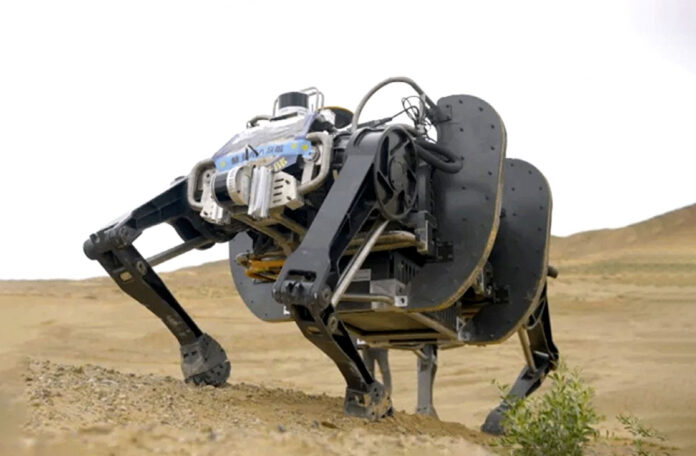(TibetanReview.net, Jan18’22) – China said Jan 16 that it had developed the world’s largest, heaviest, and most off-road-capable yak-like robots for logistics delivery and armed reconnaissance missions in high-altitude war zones, obviously referring, more than anything else, to the occupied Tibet’s India-border areas.
The electric-powered quadruped bionic robot is expected to join logistics delivery and reconnaissance missions in complex environments that have proven too challenging for human soldiers, including remote border regions and highly risky combat zones, said China’s official globaltimes.cn Jan 16, citing analysts.
The robot walks on four legs and boasts a yak-like appearance – which has led some to dub it as a mechanical yak – the report said, citing China’s official CCTV.
Measuring more than half as tall as an adult human while walking and two times that in length, the robot can carry up to 160 kilograms, run at up to 10 kilometers an hour, and move forward and backward, turn, walk diagonally, sprint, dash and jump in a stable manner, the report said.
Equipped with sensors to be aware of the surrounding terrain and environment, the robot has displayed a very strong adaptability to various types of terrains including steps, trenches and cliffs, not to mention muddy roads, grasslands, deserts and snow fields, the report said.
Regarding its specific uses, the report said the robot could be deployed to deliver supplies including munitions and food in environments like plateaus, mountains, deserts and forests where normal vehicles have difficult time traversing.
It added that another potential use was close-in reconnaissance, as the robot could persistently gather battlefield intelligence and monitor target movements even in complex environments that had proven to be too challenging for human soldiers.
Citing a Chinese military expert who requested anonymity, the report said the robot would be a very good choice for missions in remote border regions where constant monitoring is needed but conditions do not favor a constant human presence, for example, in high altitude plateaus, icy regions and dense forests.
The expert has said the robot will also play a vital role in highly risky combat zones, as it can replace some human scouts and delivery teams and reduce casualties.
If needed, the robot could also be equipped with weapons and conduct armed reconnaissance missions, just like an aerial drone moving on the ground, the report said.
The report said China had developed other bionic robots as well, including a bionic mechanical dog named Geda, about the same size as a real one, weighing 32 kilograms but capable of carrying a full load of 40 kilograms of goods.
It was stated to be programmed to understand simple voice commands and use facial recognition, and to have passed tests to traverse forests, rocky roads, narrow passages and single-plank bridges.
The report cited analysts as saying China will develop more types of bionic robots and make use of their advantages in combat.
Last month, Beijing announced a five-year plan to become a leading global player in robotics by 2025.






